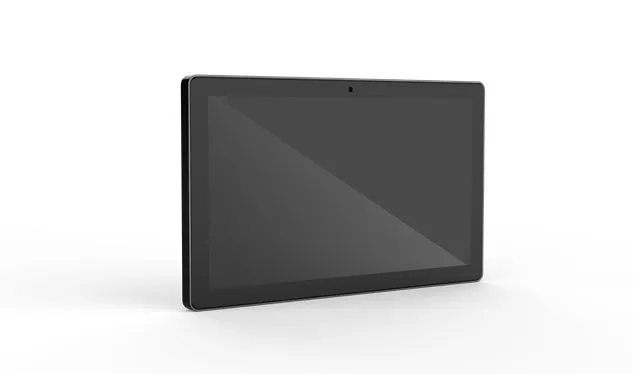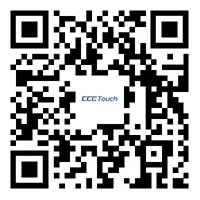High Brightness Touch Screen Monitor: Introduction and Working Principle
2025-11-14
High-brightness touch screen monitors are specialized displays that provide clear and vivid visuals in bright environments, including direct sunlight. These displays are typically used in outdoor applications such as digital signage, kiosks, point-of-sale (POS) systems, and industrial control panels, where visibility and touch functionality are critical.
Key Features:
What makes these high-brightness touch screens stand out, especially for outdoor or demanding industrial settings, is their combination of core strengths. First and foremost, they pump out serious light—think 1000 to 3000 nits or even more. That’s way beyond your typical High Brightness Touch Screen Monitor or TV (usually stuck around 250-350 nits), a big leap that makes the screen perfectly readable even when blasted with direct sunlight or intense overhead lighting. But cranking up the brightness alone isn't enough. To fight glare and annoying reflections that wash out the picture, these screens usually get special treatments like anti-glare or anti-reflective coatings. These act like a shield, cutting down that reflection and really boosting the contrast and overall clarity you see. Then there’s the touch itself. They rely on tech like Projected Capacitive (PCAP) or Infrared (IR) to ensure taps and swipes stay accurate and responsive, even outside exposed to the elements. Some models are clever enough to work even if you’ve got gloves on or the screen gets wet. Toughness is baked in too, since they’re built for places where grit, moisture, or bumps are just part of the day. Think sturdy casings, scratch-resistant tempered glass upfront, and often seals giving them ratings like IP65 – meaning you don’t have to sweat a bit of dust or water spray. And finally, a lot of these monitors are pretty smart about power and visibility. They come equipped with sensors that watch the ambient light and dial the screen brightness up or down automatically. It saves energy while making sure you always have the best possible view.
Working Principle
Getting a bright, readable picture outdoors isn't as simple as just turning the brightness dial all the way up. High brightness touch screens integrate several essential technologies working together to punch through intense ambient light. Think of the backlight like a powerful car headlight system – instead of the standard LEDs used in indoor monitors, these screens pack in high-output LED chips, often stacked or specifically designed to pump out massive light energy. This raw power is then carefully managed using sophisticated diffusion techniques to ensure that light spreads perfectly even across the entire display surface, avoiding dark spots or hotspots.
But pure power isn't enough; it needs to get through the screen efficiently. That's where the LCD magic happens. The liquid crystal panels themselves are specially tuned performers – not your off-the-shelf component. Engineers select and often tailor the optical films inside them, including the polarizers and filters, specifically to let more light pass through. This subtle internal engineering squeezes every last bit of light out of those powerful LEDs, directly translating into that visible high brightness you see.
Finally, to really tackle harsh lighting conditions like direct sun, the cleverest trick is often optical bonding. Imagine a super-clear, optical-grade glue permanently fusing the LCD panel directly to the incredibly tough tempered glass cover that users touch and see. Why go through this extra step? Because any tiny gap between layers causes internal reflections, which absolutely ruin contrast when the sun is blasting down. That adhesive layer essentially eliminates this problem right at the source. The result? Your outdoor screen delivers images with massively improved contrast, deeper blacks, and significantly reduced glare. Bonus: touching the screen feels more precise because there's less distance for your finger to be misinterpreted – the touch sensor sitting behind that bonded glass responds instantly and accurately. It's solving the sunlight problem twice over: brighter pictures and clearer interaction.

Touch Sensor Integration:
For a touch screen to reliably work outdoors, the sensing tech itself has to be pretty special too. There are two main types you'll commonly find built into these high brightness touch screen monitor , each with its own strengths:
Projected Capacitive (PCAP): Think of a tiny, invisible electric field grid hiding right under the glass you're touching. When your fingertip (or anything conductive) gets close to that grid, it creates a little electrical hiccup – that's how the screen precisely pinpoints your touch. PCAP is why your phone tap is so instant and fluid. The cool part is that well-implemented PCAP holds up surprisingly well outdoors, handling different weather without freaking out.
Infrared (IR): This one works like a fine net of invisible laser tripwires – IR beams shoot horizontally and vertically across the screen. Anything solid breaking these beams, whether it's a stylus, a bare finger, a glove, or even a raindrop, instantly registers as a touch event. That's the beauty of IR: the screen's condition doesn't mess with it – it just needs something to block an IR path. Gloves? No problem. Water splashed? No problem. It just cuts through the background noise.
Making it All Work Smoothly:While the touch tech gets your input right, two other clever systems ensure the screen stays alive and readable
Auto Dimming/Brightening: Built-in ambient light sensors constantly "look around" at how bright the surroundings are. Based on this, the screen intelligently ramps its brightness up under glaring sun, or carefully dials it down in darker conditions. This smart adjustment isn't just for visibility; it's crucial for taming those incredibly bright LEDs' power appetite and preventing them from burning out prematurely.
Battling the Heat: Let's be honest, generating light that intense creates serious heat – especially inside an outdoor-rated, sealed-up monitor casing. Left unchecked, that heat buildup would kill the electronics fast. To counter this, you'll find clever heat management baked in: efficient heat sinks pulling warmth away from critical parts, tiny fans for airflow in tough spots, or other thermal control schemes. This quiet, essential background work keeps the whole unit humming reliably, whether it's freezing cold outside or baking under the desert sun.
Applications
These high-brightness, rugged touch screens aren't just for the office. Their specialized mix of toughness, visibility, and responsive touch makes them perfectly suited for environments where standard screens simply wouldn't cut it. Where exactly do they shine?
Outdoors is Prime Real Estate: Imagine that massive, vivid digital billboard at the busy intersection – readable at high noon. Or the reliable public information display at your local bus stop, unfazed by rain or glare. These are classic spots for these tough screens, turning sunlight from a problem into just another backdrop.
Self-Service Meets the Elements: Need a train ticket on a windy platform? Cash from a drive-through ATM in blinding sunlight? Checking your groceries outside? That's where outdoor kiosks and interactive terminals rely on this tech. They need to work reliably the first time, every time, regardless of the weather someone brings with them or if they’re bundled in gloves.
Where Dust, Spray, and Grit Live: For demanding settings like factory production lines, ship bridges, construction site control rooms, or harbor cranes, a fragile display is a liability. High-brightness, ruggedized screens provide the crucial, clear visual information operators need in these intense industrial or marine settings, surviving shock, moisture, and constant exposure.
On the Move Under the Sun: Think about your car's dashboard on a bright day – needing instant clarity without distraction. Now apply that need to navigation screens on farm equipment, infotainment systems in boats or off-road vehicles, and critical instrument displays in planes, trains, or emergency vehicles. This tech ensures critical information is visible and instantly accessible, even through shifting light and harsh conditions on road, rail, or water.
In short, any time humans need a clear, bright, and instantly responsive touch interface facing down the real world – from bustling streets to noisy factory floors or the driver's seat – that's where this specialized display technology comes into its own.




